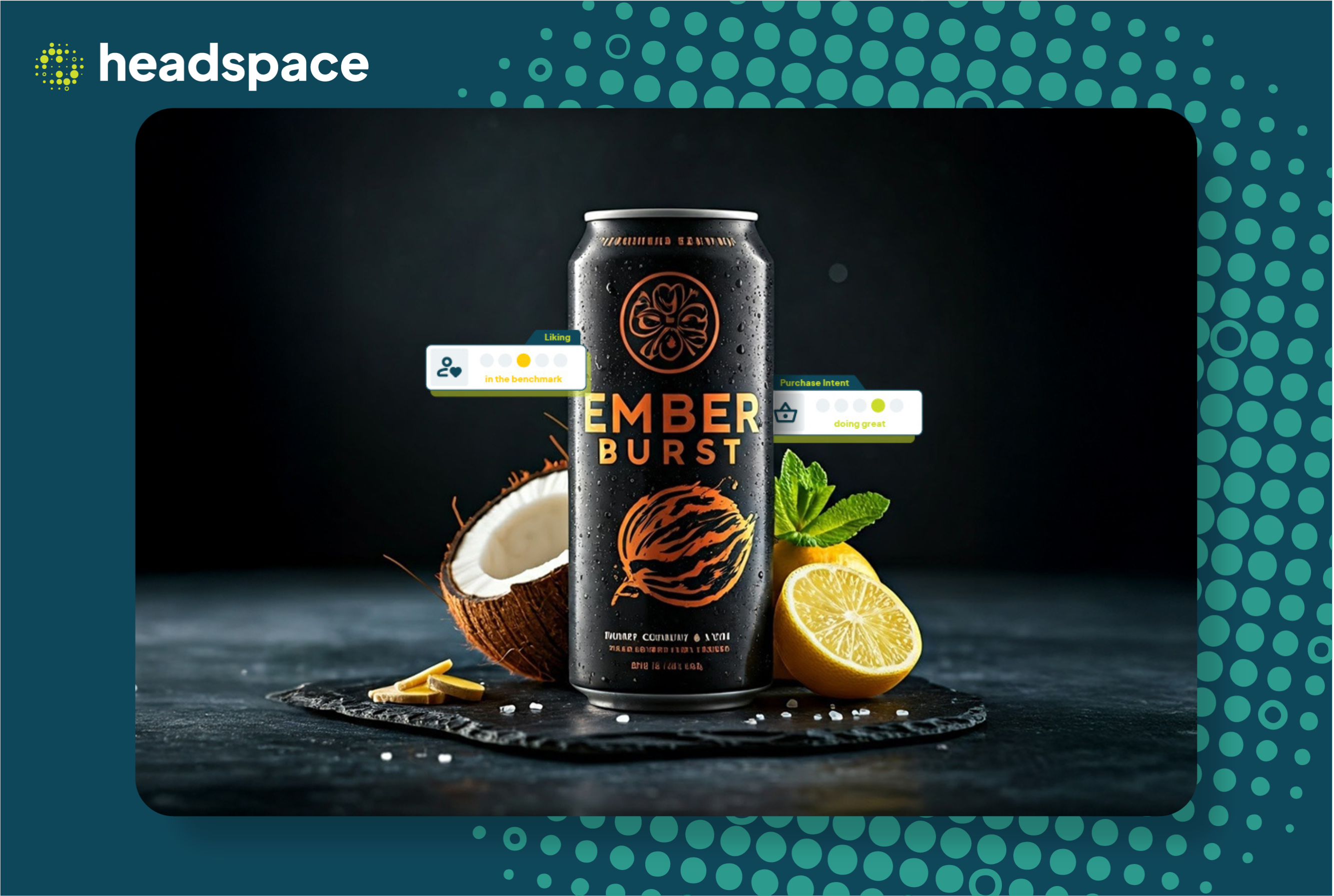Goodbye consumer panels: The smarter, faster way to predict what shoppers really want
Touted as the first new permanent flavor addition to Coca-Cola's North American lineup in three years, Coke spiced was designed to appeal to younger...
3 min read
![]() Headspace by Foodpairing
:
Feb 5, 2025 12:31:59 PM
Headspace by Foodpairing
:
Feb 5, 2025 12:31:59 PM

The dynamics of new product development (NPD) within the consumer packaged goods (CPG) industry have undergone a significant transformation. The traditional model of long development and iteration cycles, substantial consumer testing expenditures, and decisions based on intuition is no longer viable.
Despite this, many brands still struggle with:
❌ High failure rates—85% of new products are withdrawn within 12-18 months
❌ Slow validation cycles—Traditional consumer panels take months and cost thousands
❌ Marketing & R&D silos—Disconnected teams slow down innovation
What’s the solution? Adopting a new innovation playbook that integrates artificial intelligence (AI)-powered consumer validation, streamlines processes, and fosters synergistic collaboration between marketing and R&D.
AI-powered platforms like Headspace are changing the game, allowing brands to validate ideas instantly, reduce risk, and accelerate time-to-market—without needing massive budgets.
The pressure to expedite new product launches has intensified considerably over the last few years. Consumer preferences shift rapidly, and brands that fail to keep up risk losing market share.
Simon Van Cauwenberge (Solution Delivery Manager at Foodpairing) explains this challenge:
“The speed of trends is incredible, and to implement them effectively without overlooking key details is a huge challenge.”
However, speed should not come at the expense of accuracy. Brands that rush without proper validation risk launching products that miss the mark.
The risks of delayed validation
Traditional consumer testing methodologies, such as central location tests (CLTs), are often slow, expensive, and implemented too late in the development process to effectively influence product design.
Consider the Starbucks Unicorn Frappuccino—a visually striking product that gained social media traction but the flavor execution left much to be desired.
As Van Cauwenberge points out:
“The key focus was on the color of the product and the flavor was slightly overlooked. Companies need more connected data to avoid such missteps.”
Brands need to validate trends in the right context, ensuring that new products don’t just look good but also meet consumer expectations for taste, function, and experience. The solution? Early consumer validation—testing concepts with digital consumers before investing in large-scale production.
One of the biggest obstacles to quick and successful innovation isn’t just the lack of consumer data—it’s the internal silos within companies.
Marketing and R&D often work in isolation. Even with the rise of digital collaboration tools, these two departments remain on separate islands, making innovation slow and fragmented.
A unified NPD process
To execute an agile NPD strategy, marketing and R&D must function as a single, integrated unit.
How AI helps bridge the gap:
✅ Interconnected data sets (like knowledge graphs) ensure marketing insights flow directly into R&D
✅ AI-powered validation tools allow teams to instantly see how a product will perform before launch
✅ Cross-functional collaboration speeds up product iterations and decision-making
When consumer insights, and the brief from marketingare directly integrated into R&D, brands launch better products—faster.
The most successful brands must no longer rely on traditional consumer panels to validate ideas. Instead, they need to leverage digital twins of their consumers for early validation. Digital twins of consumers are virtual representations of your target consumer that reflect the behaviors, preferences, and interactions of real-world consumers.
What digital twins can do for your NPD process:
✅ Test millions of product concepts instantly
✅ Provide real-time insights on purchase intent, flavor preferences, and novelty
✅ Eliminate human bias, focusing solely on data-driven validation

Headspace uses digital twins to undertake early-stage validation. Read more about how digital twins can help your innovation process.
“With Headspace, you can remove human bias and focus on data-driven decisions instead of opinions.” — Jonathan Raemdonck, Sales & Marketing Director, Foodpairing
The old way of guesswork, slow testing, and isolated teams is no longer sustainable. By 2025, successful CPG brands will have adopted a new, data-driven, agile, and consumer-centric approach to NPD. This transition represents a shift from the traditional approach which involves:
❌ Long product development cycles
❌ Expensive, slow consumer testing
❌ Marketing & R&D working in silos
The new AI-Driven playbook entails the following:
✅ Early consumer validation to avoid costly product failures
✅ AI-powered testing to predict consumer reactions instantly
✅ Seamless Marketing & R&D collaboration for faster, better innovation
Jonathan Raemdonck sums it up best: “Innovation will be more democratized.”
AI-powered platforms like Headspace are making fast, cost-effective, and data-driven innovation accessible to all brands—from startups to global CPG leaders.
Interested in creating products consumers will buy, love, and buy again? Explore how tools like Headspace are revolutionizing product innovation.

Touted as the first new permanent flavor addition to Coca-Cola's North American lineup in three years, Coke spiced was designed to appeal to younger...
.png)
The food and beverage industry is a fast-moving landscape where new trends emerge rapidly—from spicy flavors and adaptogenic drinks to plant-based...
.png)
The traditional playbook for creating winning beverages relied heavily on direct consumer feedback: surveys, interviews, focus groups. This...